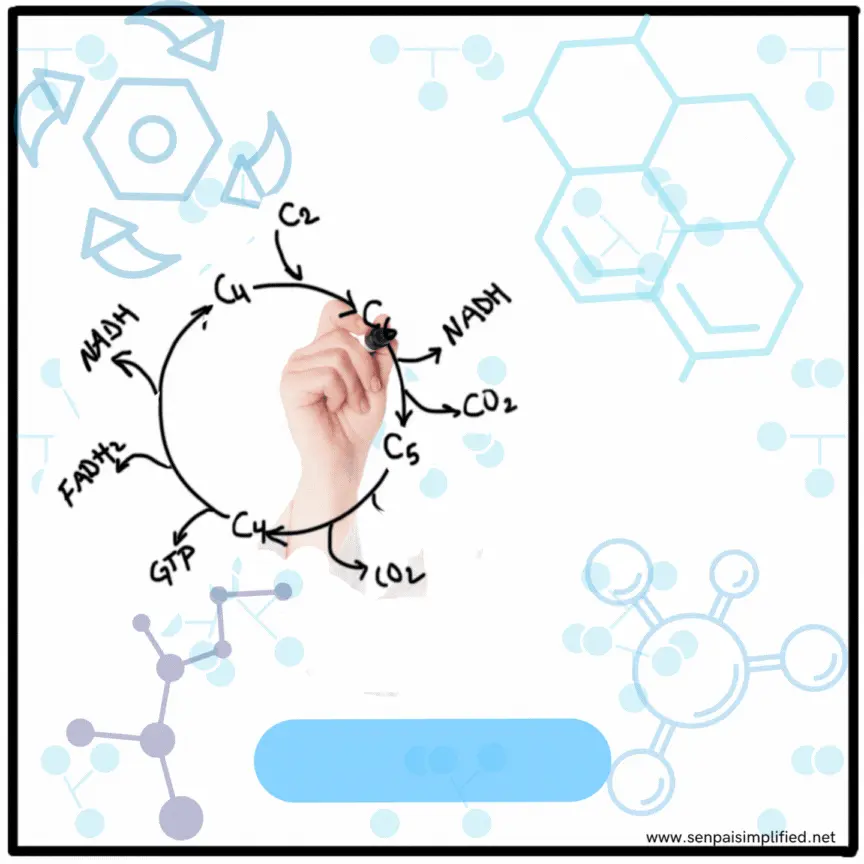The Krebs cycle, also known as the citric acid cycle or the tricarboxylic acid (TCA) cycle, is a vital part of cellular metabolism. It is an aerobic pathway that occurs in the mitochondrial matrix and on the inner mitochondrial membrane. The cycle links carbohydrate, lipid, and protein metabolism and is considered an amphibolic and anaplerotic pathway. In this article, we will discuss the details of the Krebs cycle, its regulation, and the clinical significance of its dysfunction.
The Krebs cycle begins with acetyl CoA (2C) and ends with the production of two molecules of carbon dioxide (CO2). The cycle consists of a series of chemical reactions that occur in the mitochondrial matrix and on the inner mitochondrial membrane. It is an aerobic pathway that indirectly requires oxygen, and it plays a critical role in the generation of ATP, the energy currency of the cell.
Regulation of the Krebs Cycle
The activity of the Krebs cycle is mainly controlled by intracellular energy levels, not hormones. There are a few irreversible reactions in the TCA cycle that act as regulatory points. The main regulatory point is the oxidative decarboxylation of pyruvate to acetyl CoA, which is catalysed by the pyruvate dehydrogenase complex (PDHC).
PDH Complex
This complex contains multiple copies of three enzymes: E1, E2, and E3, as well as five coenzymes: thiamine pyrophosphate (TPP), lipoic acid, CoA, NAD+, and FADH. The PDHC is allosterically inhibited by its own products, acetyl CoA and NADH, and is also covalently modified by PDH kinase and PDH phosphatase, which is the main mechanism of regulation. High energy signals allosterically activate PDH kinase, leading to the phosphorylation and inactivation of the PDHC. On the other hand, dephosphorylation activates it. PDH kinase and phosphatase are also regulated by intracellular signals, not hormones. In addition, Ca2+ is important in skeletal muscles, ATP is an allosteric inhibitor and ADP is an allosteric activator of PDHC, and insulin is an important activator of PDHC in adipose tissue.
The rate of flux through the TCA cycle depends on substrate availability, product inhibition, and allosteric feedback inhibition. There are three main regulatory points in the cycle: citrate synthesis, the oxidative decarboxylation of isocitrate, and the oxidative decarboxylation of α-ketoglutarate.
Anabolic and Anaplerotic Role
The TCA cycle also has an anabolic role in the body. All the intermediates of the TCA cycle are potentially glucogenic, meaning they can be converted into glucose. In times of excess carbohydrates, these molecules can be converted into fats and non-essential amino acids. Succinyl CoA is also used to synthesize Heme.
The TCA cycle also has anaplerotic reactions, meaning it can refill itself if carbohydrates are limited. Proteins and fats can be converted to TCA cycle intermediates.
- Oxaloacetate form pyruvate by Pyruvate carboxylase (PC)
- Transamination reactions
- oxaloacetate from Aspartate
- α- ketoglutarate from Glutamate dehydrogenase
- Formation of Succinyl CoA –from the oxidation of odd
chain fatty acids
Clinical Significance
PDHC Deficiency
PDHC deficiency is an X-linked dominant condition that is usually caused by a deficiency of E1. This leads to the accumulation of pyruvate, which is then diverted to lactate production, resulting in congenital lactic acid
Arsenic/ Heavy Metal Poisoning
This mainly affects enzymes that require lipoic acid as a coenzyme, such as the pyruvate dehydrogenase complex (PDHC) and the α-ketoglutarate dehydrogenase complex, which are involved in the Krebs cycle (TCA cycle). Hg, Ar, and Pb have a high affinity for –SH group.
Arsenite, a toxic form of arsenic, binds to lipoic acid and this causes the enzyme to become dysfunctional. This leads to the accumulation of pyruvate and other intermediates in the TCA cycle, which are then converted to lactate instead of entering the cycle. This results in lactic acidosis




Leave a Reply